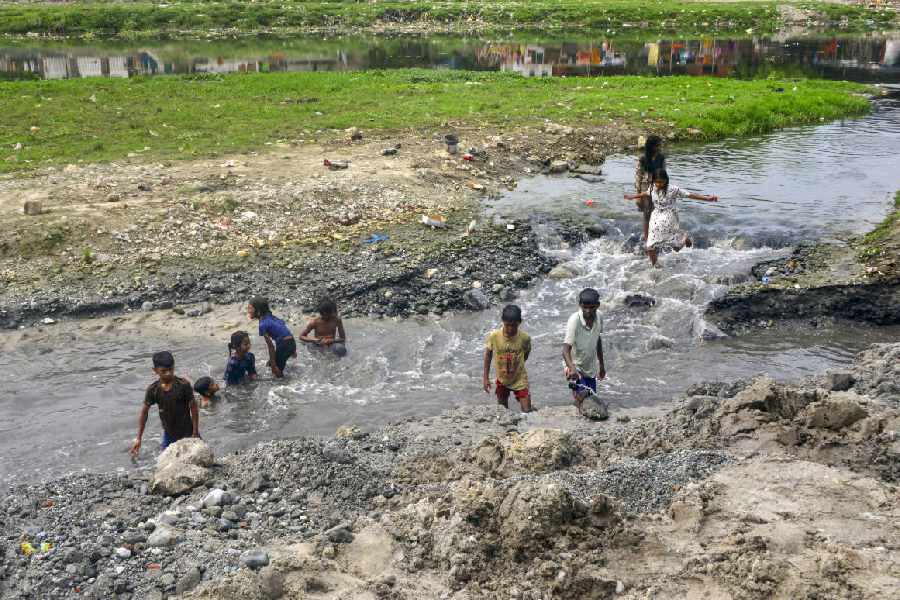 |
| A Gangetic dolphin. Picture by Eastern Projections |
Gangetic dolphin population rises
There’s good news for conservation enthusiasts — the number of Gangetic dolphins in Assam is rising.
A survey conducted by Aaranyak, an environmental NGO, has recorded an increase of 15 dolphins this year from the 2005 figure of 250.
The Gangetic dolphin, hunted for its oil and skin, is an endangered species with a global population of less than 2,000.
Found mainly in the Brahmaputra, the species was almost on the verge of extinction even in Assam.
However, this year’s survey recorded 212 dolphins in the Brahmaputra, 30 in Kulsi and 23 in Subansiri.
“This is a very good trend and the increase is significant considering its endangered status. We are working to conserve its population,” Abdul Wakid, the programme leader of the Gangetic Dolphin Research and Conservation Programme of Aaranyak, said in Guwahati this week.
The organisation has set up a field station at Kukurmara near the Kulsi in Kamrup district to monitor the dolphins.
It has developed a dolphin conservation network involving 40 community-based trained volunteers to monitor and conserve the dolphins and their habitats scientifically.
The Assam government recently declared the dolphin as the state aquatic animal.
“Since the state government has declared the Gangetic dolphin as the state aquatic animal, it is essential to protect dolphin hotspots,” Wakid said.
 |
Kaziranga National Park authorities are praying for floods.
It has rained enough this year to wash away the roads but not hard enough for boats to be brought out.
With no roads and no boats, the park officials and guards are being forced to remain in their camps, which has been hampering their anti-poaching campaign.
“We don’t know what to do. Usually, the park is flooded at this time of the year and our guards move about in country boats. Now, there are neither roads nor water,” the director of Kaziranga, S.N. Buragohain, said.
He said if there are no floods this season, grass and unwanted weeds would fill the park, affecting the movement of animals as well.
“Floods are essential for Kaziranga’s ecosystem,” the director said.
Footnote
 |
| Illustration by Uday Deb |
A villager living on the fringes of Gibbon Wildlife Sanctuary in Jorhat is enjoying a flash of fame after he chased away a leopard with a lathi when the hungry animal strayed into his hamlet for a meal.
Around 4.30am on Saturday, Biren Bora was awakened by a roar in his backyard. His eyes still heavy from sleep, it took a while to register that it was a leopard growling in his cow shed.
With a wildly-beating heart, Bora peered through the window that opened to the cow shed.
It was indeed a leopard, and it was trying to pull away a pregnant cow from the shed.
Since the cow was tied to a pole, the leopard struggled with all its might but with little success.
But if the animal continued to tug hard enough, the pole might give way any time, Bora feared.
After a moment of thought, he picked up a stick and ran out to the cowshed. The leopard continued its fight for a moment longer and then fled into the jungle.
“It was Bora’s courage that saved the cow,” a forest official at Mariani, said.
Man-animal conflicts are common in these parts.
In fact, an army camp in the area has started begun planting bhoot jolokia (chilli) to keep herds of wild elephants away.










